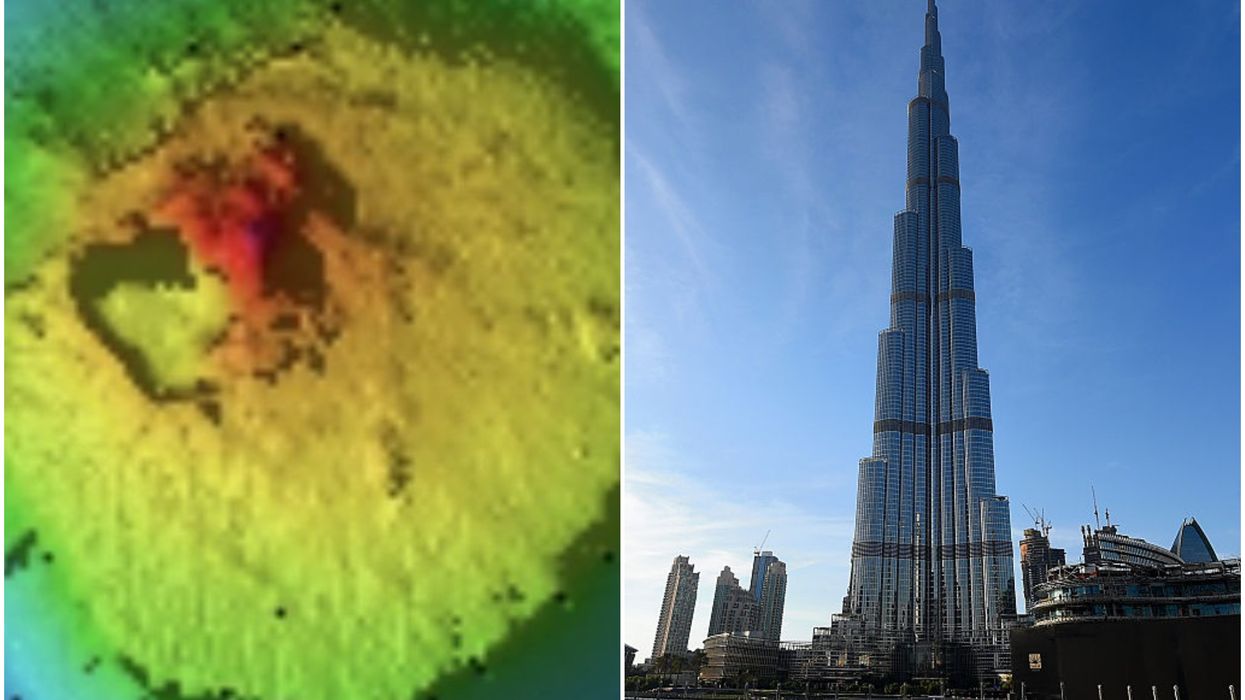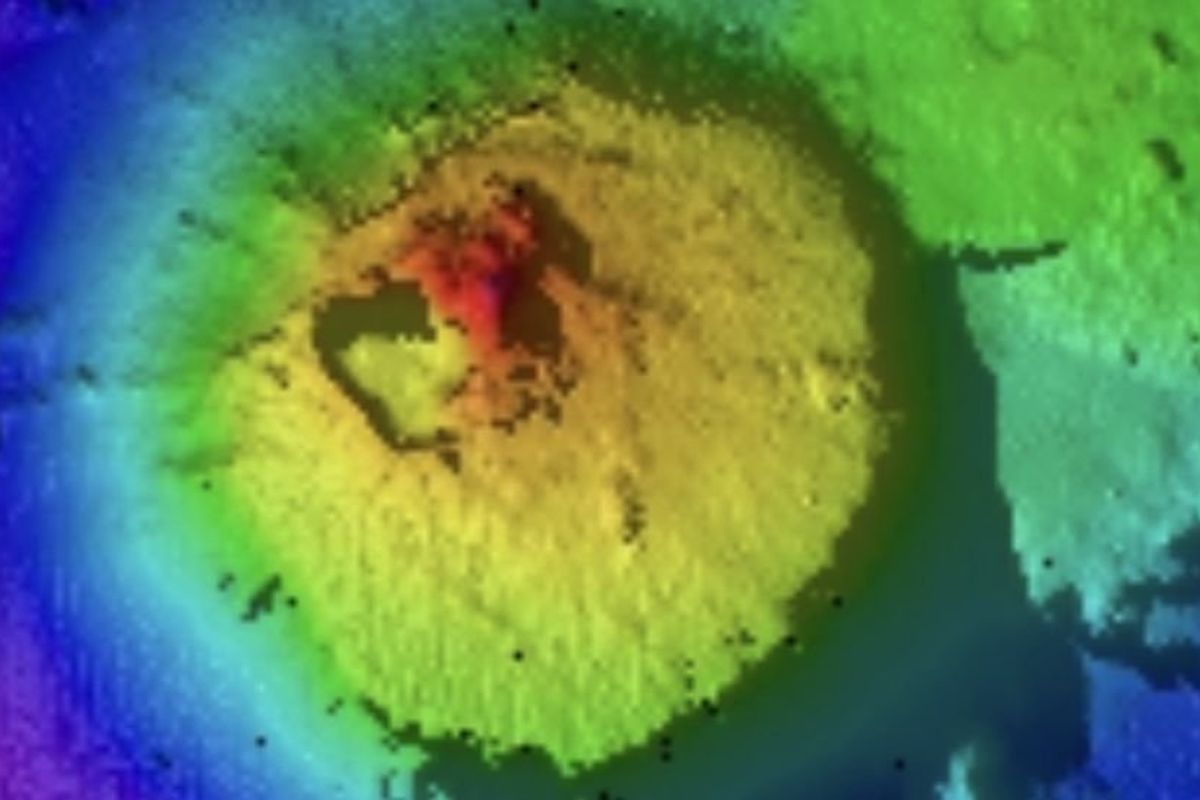Science & Tech
Harriet Brewis
Jul 10, 2025

The giant seamount (left) is double the height of Dubai's Burj Khalifa (right)
Schmidt Ocean Institute/iStock
The world’s tallest building, the Burj Khalifa in Dubai, is a staggering 2,722 ft tall.
That’s 829.8 metres, or just over half a mile, making London’s top skyscraper, the Shard, seem like a glorified bungalow (at 309.6 metres).
You might think anything of such an impressive stature would be pretty hard to miss. However, scientists have only just discovered an extinct volcano that is twice as high as the soaring jewel in Dubai’s crown.
The 5,250-foot-tall (1,600 metres) formation was found by ocean explorers while they were mapping the seabed off the coast of Guatemala.
Technically, it is a seamount – a massive underwater geological feature which typically forms from extinct volcanos, as Live Science notes.

The experts uncovered the towering marvel some 7,870 feet (2,400 m) below sea level during an expedition organised by the Schmidt Ocean Institute over the summer.
"A seamount over 1.5 kilometres tall which has, until now, been hidden under the waves really highlights how much we have yet to discover," Jyotika Virmani, the executive director of Schmidt Ocean Institute, said in a statement.
The cone-shaped feature covers 5.4 square miles (14 square kilometres) and is located in the Pacific Ocean, in international waters, 97 miles (156 kilometres) from Guatemalan waters.
The team made the exciting discovery thanks to multibeam sonar mapping during a six-day crossing from Costa Rica.
Seamounts serve as vital rocky habitats for deep-sea corals, sponges and invertebrates since the majority of the Earth’s seabeds are covered in loose, muddy sediment.
Satellite data suggests there are more than 100,000 unexplored seamounts that will be uncovered through ongoing seafloor mapping.
"A complete seafloor map is a fundamental element of understanding our ocean," Virmani said. "It's exciting to be living in an era where technology allows us to map and see these amazing parts of our planet for the first time.”
The Schmidt Ocean Institute is working alongside the Seabed 2030 project and other partners to map out the entire seafloor by the end of the decade.
This article was originally published on 25 November 2023
Why not read...
How your summer holiday could be helping aliens detect Earth
Biggest-ever simulation of the universe could explain how we got here
Sign up for our free Indy100 weekly newsletter
Have your say in our news democracy. Click the upvote icon at the top of the page to help raise this article through the indy100 rankings
Top 100
The Conversation (0)













